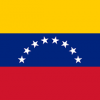I require advice as I need to evaluate the need of RD or PSV at the outlet line of CW (tube side of) exchanger. After searching out, I came to know there are two basis for CW;
1. Tube Rupture Case
2. Thermal expansion due to blockage in line.
1. For tube rupture case, shell side fluid inlet pressure will be higher than the design pressure of CW outlet line. Kindly correct me if I am wrong.
2. For thermal expansion, PSV(which is sometimes referred as TSV) can be provided almost on all exchangers. But if you want to know the basis, inlet temperature of shell (hot) fluid should be high enough to bring CW near to its saturation temp which is almost impossible for CW exchangers. Kindly correct me if I am wrong.
Regards

 FB
FB












